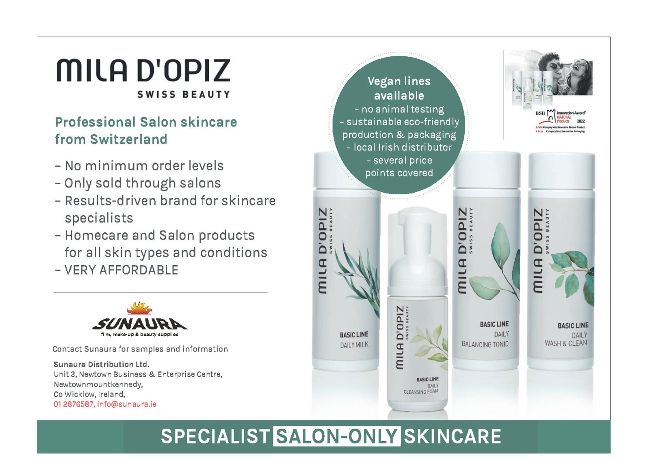Spotlight on… squalane
With squalane getting a lot of attention on social media in recent times, Ellen Cummings looks at the uses and benefits of this trending ingredient, and how it can transform your clients' skincare routines
What’s the difference between squalene and squalane?
Squalene is a type of lipid (the building blocks of cells) that is found in many plants and animals, including humans. In fact, it’s estimated that 10-12% of human sebum consists of squalene. Squalane is derived from squalene – squalene is an unsaturated hydrocarbon compound naturally found in certain oils, while squalane is the hydrogenated and most stable form of squalene.
“Squalane possesses a unique molecular structure, which imparts several notable properties, including excellent stability, low viscosity and high oxidative stability,” explains Cigdem Kemal Yilmaz, a skincare formulator and founder of Skin Masterclass, an online skincare education platform. “Its lack of double bonds renders squalane highly resistant to oxidation and degradation, making it an ideal ingredient for use in skincare products.”
The squalane we use in skincare usually comes from natural sources. “Today, the majority of squalane is sourced from plant-derived oils using advanced extraction techniques, such as molecular distillation and fractionation,” notes Kemal Yilmaz. “Squalane is a more sustainable and ethical alternative to squalene because it can be sourced from plantbased ingredients like sugar cane, olives or rice bran, reducing the environmental impact associated with harvesting squalene from sharks.”
What can it help with?
“Squalane has been used in skincare for many years due to its proven ability to prevent transepidermal water loss, while also acting as an antioxidant,” says Michelle Ryan, national trainer for Image Skincare in Ireland. “It acts as a continuous hydrator by locking in moisture and leaving the skin feeling nourished. In addition, it is really good for strengthening the skin's barrier and reducing sensitivity.” Squalane also has anti-inflammatory properties that can soothe and calm the skin, helping to reduce irritation. “This makes it great for conditions such as acne and eczema, even helping to reduce redness,” comments Kelly Saynor, clinical director of Medica Forte, which created The Perfect Peel.

“Its natural antioxidant properties can protect the skin from free radicals and oxidative stress,” says Kemal Yilmaz. “By neutralising free radicals, squalane helps to reduce the signs of ageing and promote healthier looking skin. Additionally, it can promote skin cell regeneration and renewal by maintaining the skin’s barrier function, supporting the skin’s natural exfoliation process and improving the overall texture of the skin. It is also non-comedogenic, meaning it does not clog pores, and it has a lightweight, non-greasy texture that makes it suitable for a wide range of skin types.”
How should it be used?
Squalane is usually found in a variety of skincare formulations, all of which are designed to enhance hydration and protect the barrier of the skin.
“It's an ingredient that's generally included in products such as moisturisers and serums,”says Ryan. “It's very rare that you would find it as a stand-alone ingredient.”
“It can be found in facial oils combined with other oils such as argan or jojoba oil to nourish and soften the skin, as well as lip balms and sun protection products to provide additional hydration and improve the product’s texture,” adds Kemal Yilmaz.
Squalane can also be found in professional skincare treatments, including facials and chemical peels.
“It's often used in these treatments for its moisturising and calming properties, making it a great choice to soothe the skin post-treatment,” says Saynor. “It's also used in some post-procedure products to help promote healing and reduce inflammation.”
Squalane is very stable and isn’t an active, so it pairs well with other skincare ingredients and can often be found alongside other hydrators such as hyaluronic acid and ceramides, as well as antioxidants like vitamin C and glutathione. Squalane has a small molecular size, which means it can penetrate deeper into the skin, so it’s often used as a carrier for other ingredients.
Are there any contraindications?
Squalane is generally well-tolerated and suitable for most skin types. “This is the TLC of ingredients,” says Jane Saint, national trainer at +maskology. “It’s suitable for anyone who needs moisture and nourishment, such as those with naturally dry skin, eczema, psoriasis or dermatitis. Squalane can be a particularly lovely treatment for any patients receiving chemotherapy or radiotherapy.”
However, if a client has overactive sebaceous glands, then squalane might not be the best to use since it’s very similar to sebum. “It's suitable for normal/dry skin, but I would avoid using it on active acne as its oil-soluble,” says Ryan.
As with any skincare ingredient, individual reactions may vary. “Anyone with known allergies or skin sensitivities should perform a patch test before using new products containing squalane,” advises Saynor.”